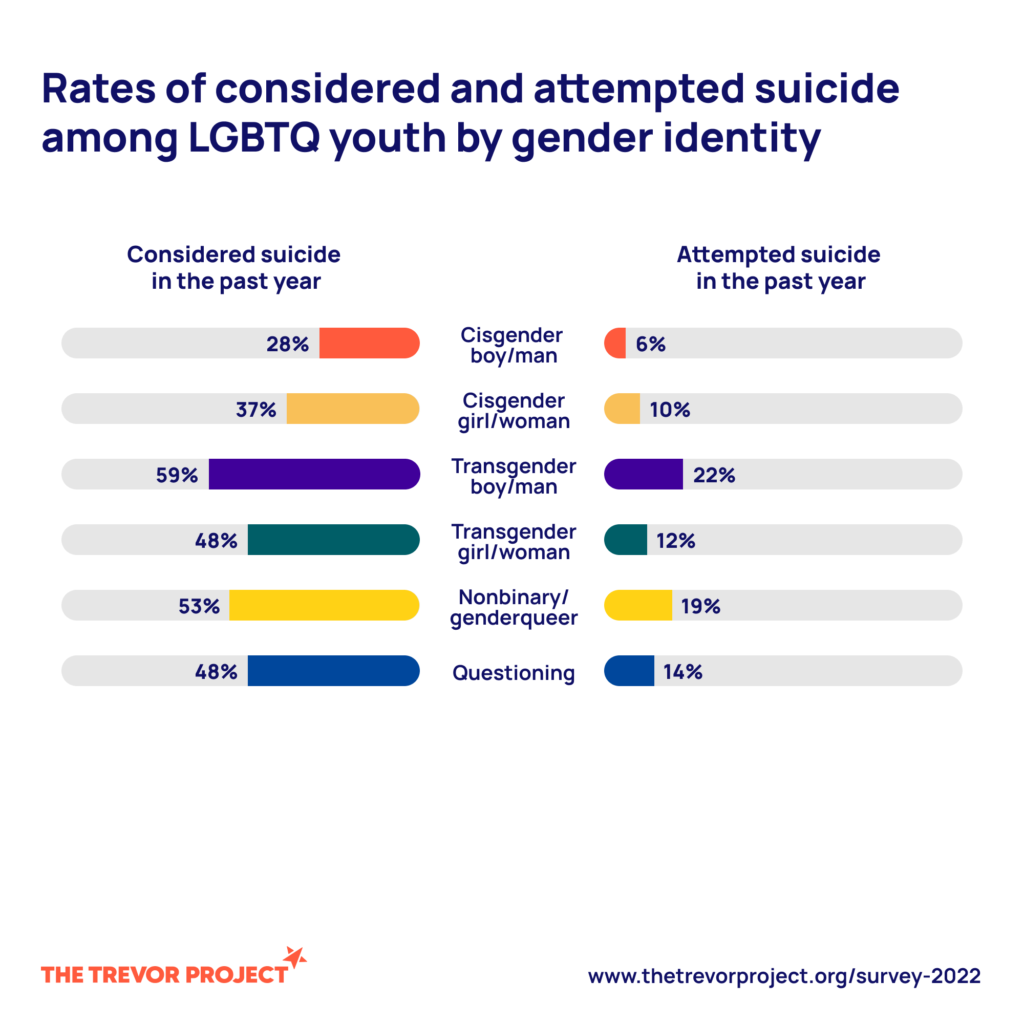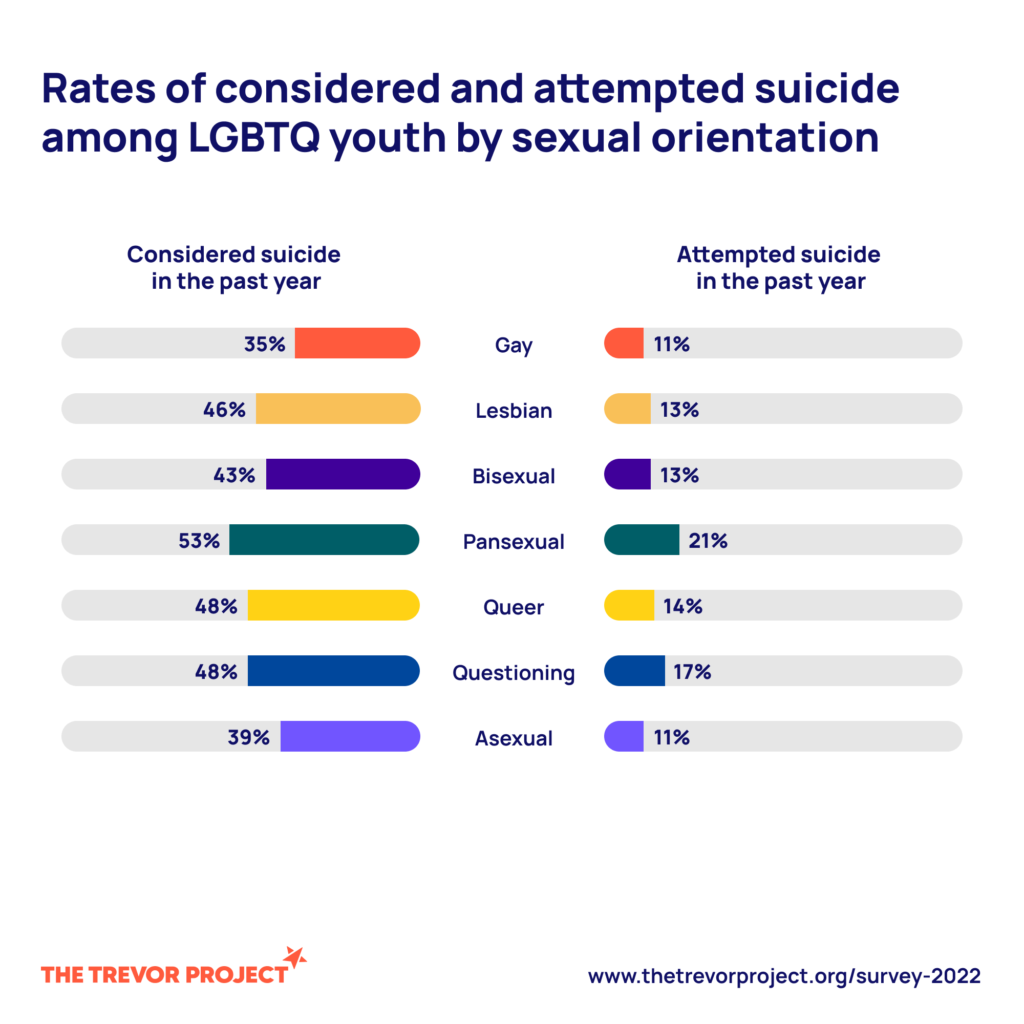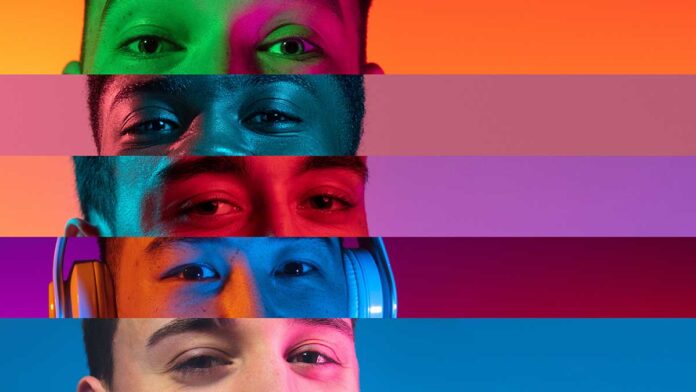The Trevor Project’s annual National Survey on LGBTQ Youth Mental Health revealed that 45% of LGBTQ people between the ages of 13 and 24 considered suicide last year, an increase from 2019 and 2020. The survey also revealed that 14% of LGBTQ youth attempted suicide in 2021 and that a majority of LGBTQ youth reported symptoms of anxiety and depression.
Nearly 34,000 LGBTQ young people took part in the survey by answering a questionnaire which included questions on mental health. According to the organization, “questions on considering and attempting suicide in the past year were taken from the Centers for Disease Control and Prevention’s Youth Risk Behavior Survey to allow for comparisons to their nationally representative sample.”
Of the respondents to the survey, 45% were LGBTQ youth of color and 48% were transgender or nonbinary, with 84% of respondents being either from the south, midwest, or west.
“These data provide critical insights into some of the unique suicide risk factors faced by LGBTQ youth, top barriers to mental health care, and the negative impacts of COVID-19 and relentless anti-transgender legislation,” CEO and executive director of the Trevor Project Amit Paley said in a statement. “This research also highlights several ways in which we can all support the LGBTQ young people in our lives—and help prevent suicide.”

Among the key findings of the survey were:
- 45% of LGBTQ youth seriously considered attempting suicide in the past year, with rates higher among trans youth.
- Fewer than 1 in 3 transgender and nonbinary youth found their home to be gender-affirming.
- 60% of LGBTQ youth who wanted mental health care in the past year were not able to get it.
- LGBTQ youth who felt high social support from their family reported attempting suicide at less than half the rate of those who felt low or moderate social support.
- LGBTQ youth who live in a community that is accepting of LGBTQ people reported significantly lower rates of attempting suicide than those who do not.
Of the LGBTQ youth who reported considering suicide last year, a majority were between the ages of 13 and 17. Transgender youth were also at a higher risk for considering suicide than cisgender youth.
“Although our data continue to show high rates of mental health and suicide risk among LGBTQ young people, it is crucial to note that these rates vary widely based on the way LGBTQ youth are treated,” Dr. Myeshia Price, Senior Research Scientist at The Trevor Project, said in a statement.
In addition to considering suicide, 73% of LGBTQ youth reported experiencing symptoms of anxiety, and 58% reported feeling symptoms of depression. Symptoms were more widely reported for youth ages 13-17 compared to those 18-24.
Of the 60% of LGBTQ youth who reported wanting access to mental health care services but were unable to receive them, the top reasons for not receiving care were: fear of discussing mental health concerns; concerns with obtaining parent/caregiver permission; fear of not being taken seriously; and lack of affordability.
Among the issues that contribute to poor mental health among LGBTQ youth are threats of physical harm and discrimination. The survey revealed that 31% of LGBTQ youth reported having been physically threatened or harmed due to either their sexual orientation, and 37% of trans and nonbinary youth reported having been physically threatened or harmed due to their gender identity. When considering respondents race/ethnicity, Native/Indigenous and Middle Eastern/Northern African LGBTQ youth reported the highest rates of physical harm.

“We must recognize that LGBTQ young people face stressors simply for being who they are that their peers never have to worry about,” Paley said in a statement.
In terms of combatting the stressors faced with being LGBTQ, youth who received high levels of social support from their friends and family were 62 percent less likely to attempt suicide than those who received little to no support. Youth who reported receiving support from their parents or caregivers said that the ways they felt supported included: feeling that their LGBTQ friends or partners were supported; being spoken with respectfully about their LGBTQ identity; having their correct name and pronouns used. In addition 89% of youth said that seeing LGBTQ representation in television and movies made them feel good about themselves.
Speaking on the need to support LGBTQ youth, Paley said that “The fact that very simple things — like support from family and friends, seeing LGBTQ representation in media, and having your gender expression and pronouns respected — can have such a positive impact on the mental health of an LGBTQ young person is inspiring, and it should command more attention in conversations around suicide prevention and public debates around LGBTQ inclusion.”
